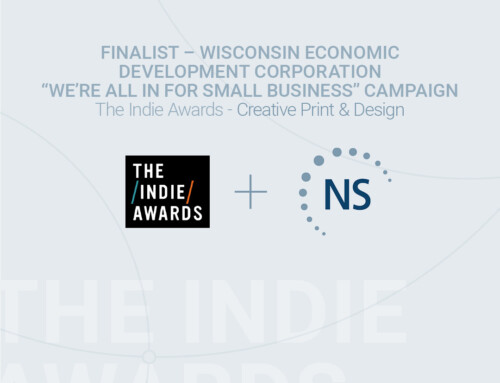On April 22, 2016, UK-based Campaign magazine published the 10th annual World’s Leading Independent Agencies feature in association with thenetworkone, the world’s leading independent organization for independent agencies. Nelson Schmidt is honored to be the only U.S.-based agency in 2016.
Each of the 14 agencies from 12 countries contributed an essay, sharing perspective and insights from their vantage points across the globe. Below is an excerpt from the Nelson Schmidt contribution:
Originally published in the 4/22/16 issue of Campaign magazine:
We believe that labelling marketing as either “business-to-consumer” or “business-to-business” is no longer the most relevant starting point for solving today’s critical marketing challenges.
It’s about the customer journey
The marketing community, in the US and elsewhere, has spent decades carefully drawing the distinction between B2C and B2B. For the sake of generalisation, we’ve predominantly defined consumer marketing as highly emotional and creatively driven; and business marketing as fact- and feature-based and channel-driven. Consumer marketing was bright, shiny TV spots; business marketing was print ads in trade journals. You get the idea.
Our “aha” moment was the realisation that the journeys customers take for highly considered purchases are virtually identical, regardless of whether they’re sitting at their desk or in their living room. And the information required to make these considered purchases is remarkably similar, whether it be in a B2B or B2C capacity.
Finding common ground
The reality is that virtually all marketers face both B2C and B2B marketing challenges. Consumer marketers almost invariably have distribution channel partners (ie. business audiences) who are critical to the purchase cycle. On the B2B side, you’re ultimately communicating with a person; they’re simply acting in a professional role.
Turns out, when we spoke with chief marketing officers across B2B and B2C brands to see whether they’re experiencing the same shift – they are. One marketing leader at a 100-year-old global manufacturer said: “For decades, we exclusively sold through distribution. And we depended on our distributors to sell our product to the marketplace. Whether it has been market changes, the impact of digital technology or a need for growth and expansion, we’re seeing not just a blurring of the lines between B2B and B2C but a meshing of the two together around the end customer.”
Is any of this a surprise? As human beings, the lines between our personal and professional lives have blurred. We access e-mail at all hours of the day and night. Our work increasingly straddles borders and time zones. Why would we, as marketers, not evolve alongside the human beings we seek to attract as buyers?
Solve differently
So, forget the antiquated and artificial approach of applying B2B or B2C marketing with uniformity. Instead, ask yourself: “Is my product (or service) an impulse buy or is it a highly considered purchase?”
At our agency, we’ve chosen to focus on the considered purchase end of this spectrum; complex buying decisions with relatively high degrees of financial and/or emotional risk and reward, requiring extensive information and serious deliberation, often over a fairly extended period of time.
In our experience, most B2B buying decisions are considered purchases (what greater financial risk is there than losing your job?) but so are many complex consumer purchases. Think financial services, healthcare, education, expensive recreational products or even the family vacation.
Considered Purchase Marketing is an approach that involves intimate understanding of the mindset of your customer throughout the decision-making process. Customer journey mapping creates the opportunity to focus on the various stages, gain better insights into what motivates them along the way, and modernise the marketing mix by using data and analytics to intersect and influence the purchase decisions more directly at every stage.
This is not to say that the concepts of B2B and B2C are going away – but we marketers shouldn’t start there.
And, as an independent agency, we see it as our duty to start the conversation with leaders of centralised marketing organisations to evolve the way they contemplate their responsibilities… as well as their agency options.
Read more from Campaign magazine
Originally Published 2016






